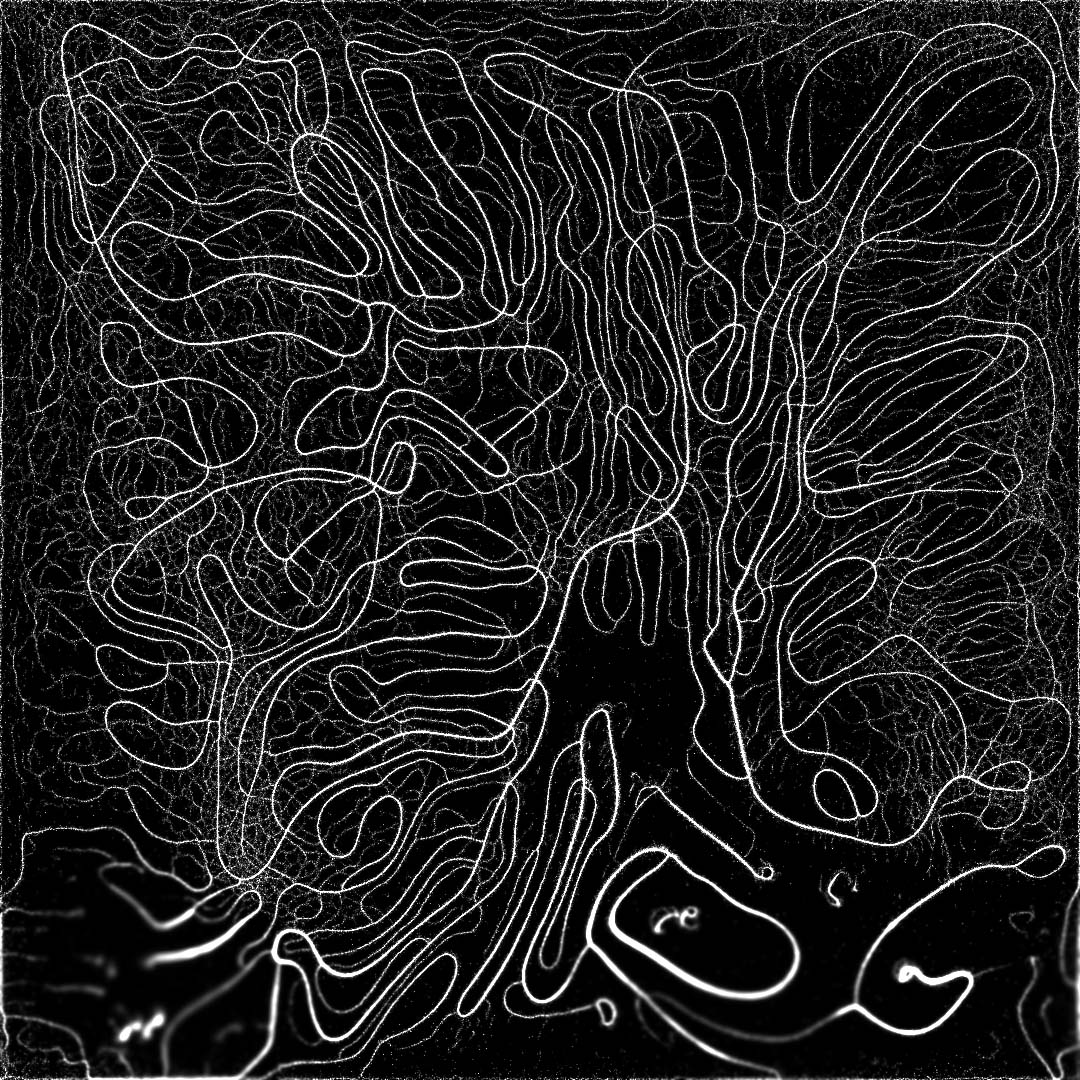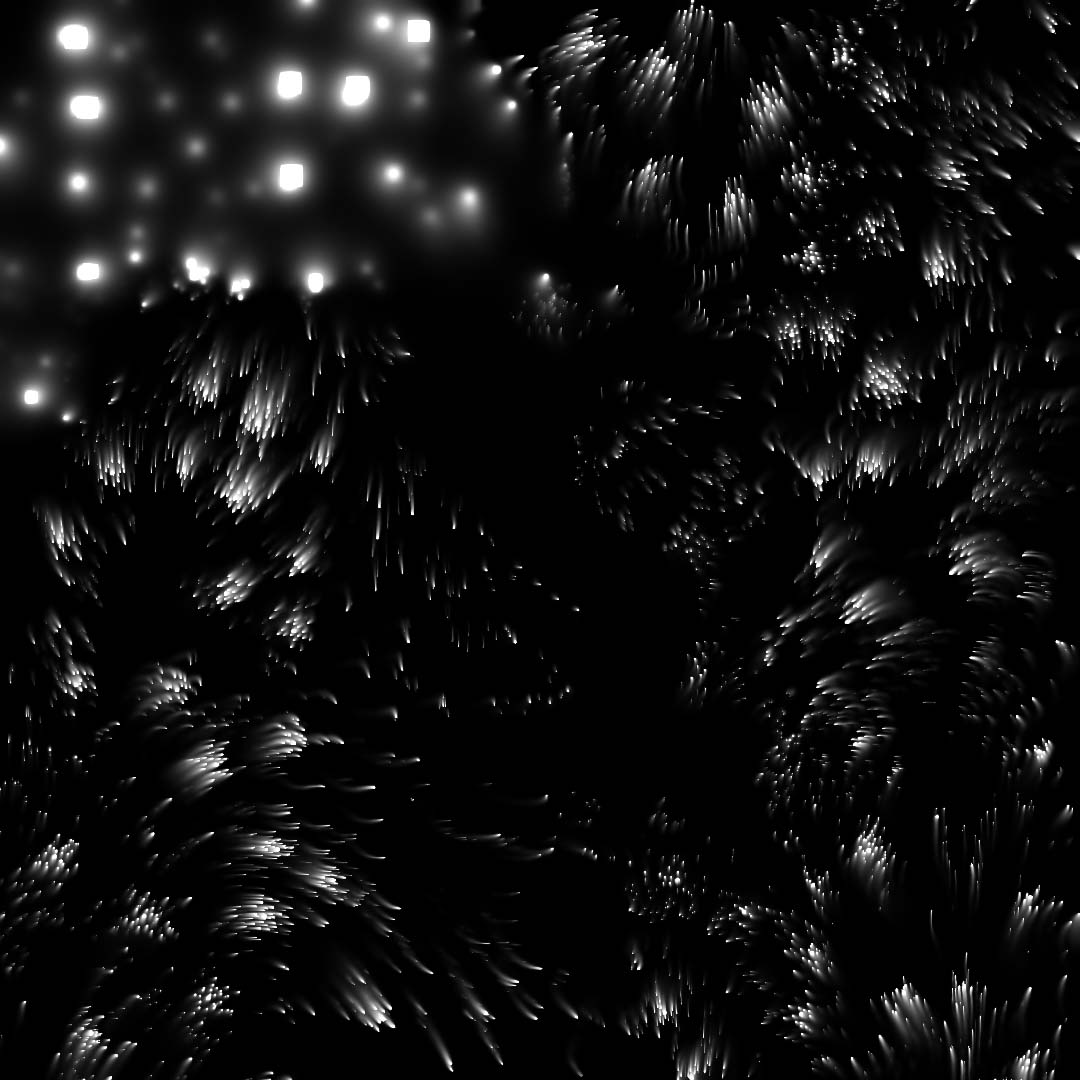Technical/aesthetic recreation of a slime mold using GLSL in Touchdesigner
The circumference of my brain is the limit of my world
2021
This diploma thesis deals with the question to what extent it is possible to transfer genuine properties (and their parameters) of a slime mold, Physarum Polycephalum, from a natural-biological to an artificial-creative system? This question will be answered in two sections.
In the first section, a literature review is used to describe what data visualization and growth algorithms are. Different types of growth algorithms are highlighted and a historical overview of them is given. In addition, two artworks that have been created by data in the broadest sense are described in more detail. These are Malwarez by Alex Dragulescu and Prolegomena by Louis Bec. The work by Louis Bec will be examined in some detail, as it contains valuable insights for this thesis. In the work Malwarez, the source codes of computer viruses are visualized as three-dimensional figures. In the work of Louis Bec is also a manifesto included, which deals with the appearance of artificial life. This is then interpreted by the author of this work.
In the second section, the growth behavior of the slime mold, Physarum Polycephalum, is transferred from a biological-natural system into an artificial-creative system by means of Touchdesigner and the programming language GLSL. In the process, the decisive parameters for the visual representation and their setting values are found out. These values are then changed in order to influence the result as much as possible and to move it away from the original visual representation. It turns out that the values with the most influence are the sensor angle, rotation angle and sensor offset distance. Using these three parameters, the behavior could be manipulated very extensively. Since these parameters are changed beyond their initial values, it is possible to obtain results that are far from the visual source material.
The result is a thesis that uses theoretical literature and practical approaches to answer the question of digital data visualization of natural biological systems.
- University of Applied Sciences 2021 — St. Pölten

Screenshot: Default settings
2021

Screenshot: Experimental settings
2021

Screenshot: Experimental settings
2021

Screenshot: Experimental settings
2021
Video: Experimental settings
2021
Video: Experimental settings
2021